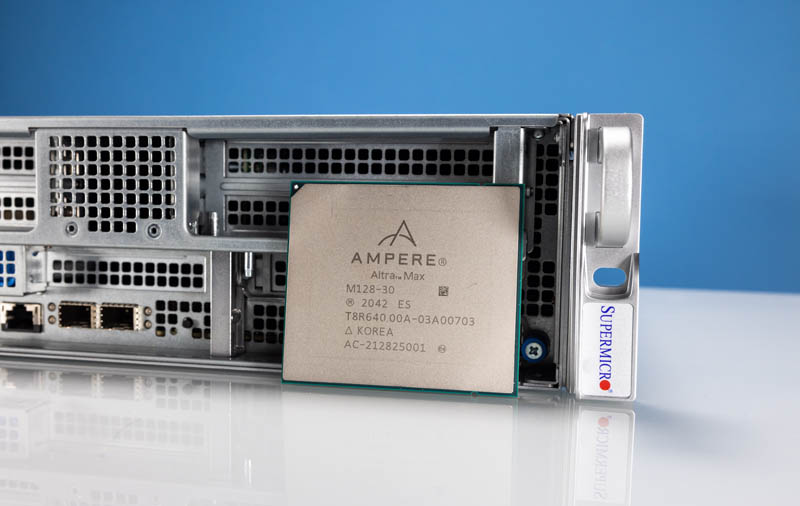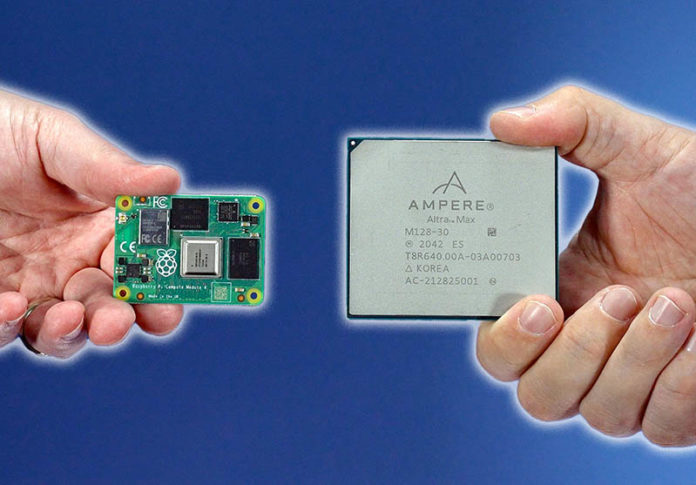Raspberry Pi’s are hard to come by these days. Likewise, Ampere Altra Max 128 core systems are becoming more popular, but are still quite rare. As a result, this weekend I filmed a collaboration with Jeff Geerling, the Raspberry Pi guru, where we compared the two solutions.
Raspberry Pi Cluster Versus Ampere Altra Max Supermicro Arm Server
If you want to check out the collab video that we filmed on the new STH set, here it is:
As always, we suggest watching this in its own tab, window, or app since the embedded viewer is not great.
In the video, Jeff showed a 6-node Raspberry Pi cluster that costs around $2200. We compared that to the Supermicro ARS-210ME-FNR 2U Edge Server we recently reviewed.

What was really interesting is that since our collaborations generally come around Supercomputing (our last was Building the Ultimate x86 and Arm Cluster-in-a-Box last year in St. Louis), Jeff wanted to run a MPI benchmark and specifically Linpack using ATLAS auto-tuning. ATLAS is not perfect, and we did not even set up the Altra Max with NPS=4 for better performance and such. Still, the HPL numbers we got were better than using an easier tool like PTS and we used the same Ansible script to kick off runs on the Raspberry Pi cluster as well as the Altra Max.
The conclusion is about what you would expect, especially if you saw our AoA Analysis Marvell ThunderX2 Equals 190 Raspberry Pi 4. I also discuss the Ampere Altra Max’s HPL performance versus the newly released AMD EPYC Genoa as in the floating point workload, there is a massive gap between the efficiency of AMD and Ampere parts. There is a reason that the Arm server CPUs typically have integer-focused performance figures for things like web serving and SPEC CPU2017 integer rates, not floating point.
Final Words
Hopefully, as our readers head out for the holiday weekend in the US this is a fun one that provokes some thought. Many folks ask why we do not typically do large Raspberry Pi clusters like the Oracle 1060 Raspberry P Cluster, and I often suggest that getting experience using larger nodes, even Project TinyMiniMicro nodes can yield better results. This video gets into a lot of that comparison.





It was great visiting you at the STH HQ, Patrick! And if you ever do get a chance to test a 1,000 node Pi cluster, I’d love to help out ;)
Or heck, if you get some time on a 1,000 node Ampere cluster… that too!
Where did the 6 node RPi board come from? That looks like something I would really like. :)
This was a great collaboration and the information shown by both you and Jeff is excellent.
It is exciting to see both of you work together on Arm-related projects, and I was certainly not expecting another collaboration so soon.
Keep up the great work and thank you both for all that you do!
@RQ that’s the Super6c from DeskPi. It has a few shortcomings compared to a more full featured board like the Turing Pi 2, but it’s fun to tinker with, if you’re really patient and can find some Pis!